Natural Health
Back Clinic Natural Health Functional Medicine Team. This is a natural approach to health care. It is a natural healing practice or a branch of alternative medicine that looks at nature for answers and explanations. There are a few Western forms of alternative medicine that NCCAM has classified as Biologically Based Therapies, as well as, Mind and Body Interventions used in stress management.
There is nothing magical about it. It is about natural healing therapies for prevention and healthy lifestyles. This means eating natural whole foods, nutritional supplements, physical exercise. This is nothing new, but it has evolved over the years within certain prevention parameters, and healthy lifestyles have proven to work repeatedly. There is nothing anti-intellectual or anti-scientific about it. All health, wellness, illness, and healing can be positively affected by simple and inexpensive natural therapies.
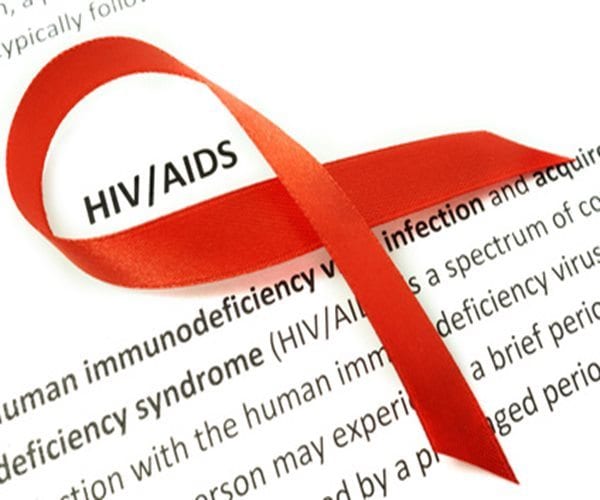
by Dr Alex Jimenez DC, APRN, FNP-BC, CFMP, IFMCP | Natural Health, Wellness
A compound in a plant found throughout Southeast Asia is a more powerful anti-HIV compound than the drug AZT that’s used to treat the condition, says a study published in the Journal of Natural Compounds.
Patentiflorin A, a chemical derived from the willow-leaved Justicia, stood out in a screening of more than 4,500 plant extracts by a team of scientists from the University of Illinois at Chicago, Hong Kong Baptist University, and the Vietnam Academy of Science and Technology to see if they had any effect against the HIV virus.
AZT is an anti-viral drug that doesn’t cure HIV, but reduces the amount of the virus in the body and reduces the risk of developing AIDS. It was the first drug approved by the FDA to treat HIV infection in 1987. Today, it is still the cornerstone of HIV treatment, although it is combined with other drugs to increase effectiveness and reduce side effects.
For the current study, Lijun Rong, professor of microbiology and immunology in the UIC College of Medicine, and his colleagues zeroed in on patentiflorin A because of its ability to inhibit an enzyme needed for HIV to incorporate its genetic code into a cell’s DNA.
AZT inhibits this enzyme, called reverse transcriptase. In studies of human cells infected with the HIV virus, patentiflorin A was significantly better at inhibiting the enzyme than AZT.
“Patentiflorin A was able to inhibit the action of reverse transcriptase much more effectively than AZT, and was able to do this both in the earliest stages of HIV infection when the virus enters macrophage cells, and alter infection when it is present in T cells of the immune system,” said Rong.
Patentiflorin A was also was effective against known drug-resistant strains of the HIV virus, making it a very promising candidate for further development into a new HIV drug.
“Patentiflorin A represents a novel anti-HIV agent that can be added to the current anti-HIV drug cocktail regimens to increase suppression of the virus and prevention of AIDS,” Rong said.
The researchers were also able to synthesize patentiflorin A. “If we can make the drug in the lab, we don’t need to establish farms to grow and harvest the plant, which requires significant financial investment, not to mention it has an environmental impact,” Rong said.
Other advances are being made in the battle against HIV. Last year, scientists at the Oregon National Primate Research Center found that giving infant monkeys human antibodies within 24 hours of being exposed to a virus similar to HIV totally cleared them of the virus within two weeks. Current HIV treatments keep the virus in check, but once a person stops taking anti-HIV drugs, the virus returns.
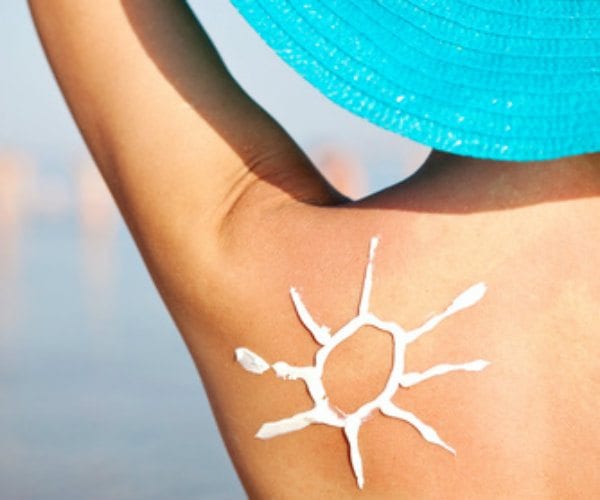
by Dr Alex Jimenez DC, APRN, FNP-BC, CFMP, IFMCP | Functional Medicine, Natural Health, Remedies, Skin Health, Wellness
Summer’s officially just a week away, and millions of Americans are facing high odds of suffering from sunburn in coming months.
If you catch too many rays and wind up looking like a lobster, head straight to your kitchen. No kidding. Here are some surprising home remedies to soothe the burn that are as good as — or better than — commercially available skin creams and lotions:
Cucumbers: These vegetables are rich in vitamin C and caffeic acid, both of which help to soothe irritated skin and reduce swelling. Cukes also have compounds with analgesic properties to numb pain. You can slice cold cucumbers and apply them to burned areas. Better yet, make a paste by mashing or blending a couple of cucumbers and apply it chilled.
Lettuce: The greens have painkilling compounds that can take the sting out of sunburn. Boil the leaves in water, then strain and chill the liquid. Apply the fluid with cotton balls.
Potatoes: These tubers have been used throughout history to ease burns, bites, scrapes, and other skin problems. Blend one or two until they get pasty — you may have to add a splash of water — then chill the paste and apply via cotton balls.
Honey: This remedy for burns goes back to ancient Egyptian times. Honey reduces inflammation, provides nutrients to the damaged tissue and seals in moisture. It also has antiseptic properties. Just spread some of the sweet stuff where it hurts.
Apple cider vinegar: A common home remedy for a variety of problems from poison ivy to acid reflux to allergies, the cider also works on sunburn. You may want to dilute it a little since one of the active ingredients, acetic acid, may sting when applied. Use cotton balls or soak a washcloth in the solution for more coverage.
Coconut oil: You can use this for both protection — it has a sun protection factor (SPF) somewhere between 5 and 10 — and relief if you just stay out too long without any other sunscreen. Apply it directly to sunburned areas and you can feel its soothing effects as its medium-chain fats are absorbed into your skin and work their healing magic.
Oatmeal: Regular rolled oats will do just fine as the oatmeal’s polysaccharides will help to heal your skin. Put about 2 cups into a clean tube sock and add it to a tub of tepid water. Let it soak a few minutes, then climb in. Squeeze out the sock every few minutes, which will turn the water cloudy. When you’re done, air dry or pat yourself off gently with a soft towel.
Yogurt: Yogurt contains probiotics and proteins that will help to heal your skin. Make sure the yogurt is plain with no flavoring and also that it has live, active cultures. Spread it around the burned areas, let it sit for about five minutes, then rinse it off with tepid water.
Witch hazel: The tannins from the plant’s liquid extract reduce inflammation, kill bacteria and repair damaged skin. Use cotton balls or a clean cloth to dab it on sore areas. Reapply as needed.
Aloe vera: The gel from the fleshy leaves of this plant is rich in glyconutrients that soothe and heal all kinds of skin problems, including burns. Slice open a leaf and the gel will ooze out. Apply it directly to sunburned areas.
When suffering from sunburn, also be sure to drink plenty of water, because you’re probably dehydrated too. And try to avoid harsh soaps that will wash away the natural oils of your skin and further dry it out.
Of course, the best sunburn remedy is prevention. That means staying out of the sun during peak hours, typically between 10 a.m. and 2 p.m. And dermatologists strongly recommend wearing a hat, covering exposed areas with clothing and using sunscreen with a SPF of 15 or higher.
Look for sunscreen labeled “full spectrum” to make sure it screens out both UVA and UVB rays. But beware that a lot of sunscreens have toxic chemicals. Your best bet is to check out the Environmental Working Group’s Skin Deep database online to find the safest products.
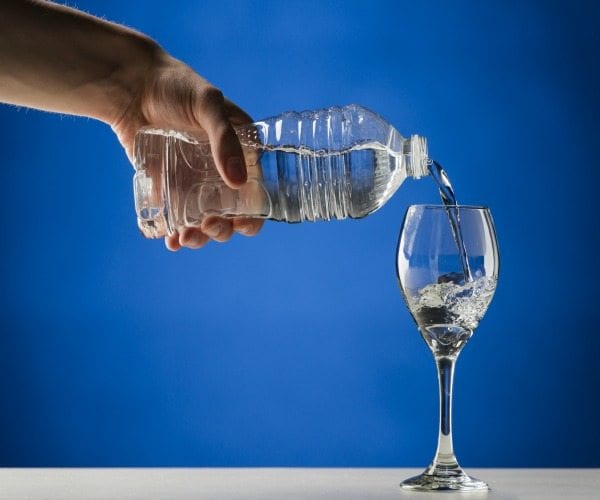
by Dr Alex Jimenez DC, APRN, FNP-BC, CFMP, IFMCP | Natural Health, Wellness
Remember the days when, if you wanted a glass of water, you poured it from the kitchen sink tap? This seems so quaint now, considering the vast number of different types of water available, including alkaline water. But is this specialty water better for your health?
Yes, says Dr. Keith Kantor, a natural health expert an author, who says alkaline water balances the body’s pH level, which can help ward off disease.
The body’s pH level refers to the acidity or alkalinity of blood. The lower the pH, the more acidic the blood. The normal blood pH is tightly regulated between 7.35 and 7.45.
“Our body keeps our pH level at between 7.35 and .45 and it does that very well. Every time our body produces an acid, a sodium bicarbonate molecule is produced to neutralize it,” says Kantor, a natural health expert and author.
“Because the American diet is very acidic, acid can build up in the body, which is why it’s beneficial to drink alkaline water,” says Kantor, the national spokesman for Optimal Harmony Water, which manufactures a type of it.
This buildup of acid can result in acidosis (an excessively acidic condition of body fluids and tissues), and this leads to inflammation, he adds.
“Alkaline water can help with a number of health problems, including acid digestion, heartburn, low energy levels and infections, nausea, and dehydration, but the biggest one is inflammation, which leads to diabetes and obesity,” he says.
But is alkaline water really healthier than tap water?
“The FDA has not studied or reviewed the science relating to alkaline water and cannot speculate or speak to a potential benefit,” says Lyndsay Meyer, spokeswoman for the U.S. Food and Drug Administration.
As a registered dietitian, Vicki Shanta Retelny says her clients often ask her about different types of water.
“I don’t think there’s enough research to say that this type of water is going to be beneficial for fending off disease,” says Retelny, author of “Total Body Diet for Dummies.”’
“If you live in an area where the tap water is hard, it could be helpful, but what most people need to be concerned with is simply whether they are drinking enough water,” she adds. (Hard water is high in dissolved calcium and magnesium.)
“There may be too much iron, sulfur or even arsenic in your tap water,” she notes.
Of course, alkaline water isn’t the only specialty water available these days. Retelny’s clients often ask her about other types of waters as well, including the debate over whether tap or bottled water is best, she says.
According to her, most tap water is generally as good as bottled.
“People spend a lot of money on bottled water but it doesn’t mean that it’s healthier than tap. Usually, it’s not really necessary,” she says.
“Some people like bottled water because they want to bring their water with them on the go, and it’s measured, so they know they are drinking enough. But tap water can be just as beneficial,” she says.
Also, although people like to believe their bottled water comes straight from the spring, it does go through a bottling process, Retelny notes.
In addition, environmentalists are concerned about the buildup of plastic water bottles, she says.
Most Americans get their tap water from a water company, which is required to publicly list its ingredients, so you can call your company to find out, she notes.
But what about specialty, or designer waters, like vitamin water. According to Retelny, they aren’t necessarily healthier either.
“Vitamin water sounds healthy, but along with the vitamins comes flavorings, colors and sugar. You need to be aware of these additions because the calories can add up,” she says.
“Also, it’s difficult to know exactly how much of vitamins are in that water, and sugar-free ones may have artificial sweeteners,” she adds.
“Ordinarily, I don’t recommend vitamin water because I think you should get your vitamins from the foods you eat,” Retelny adds.
This goes for sports drinks as well, she says.
“Drinks with added potassium and sodium are there to benefit people who are sweating because they are participating in sports, she says.
“They can be beneficial for athletes, but most people don’t need them,” Retelny adds.
To add flavor to chilled water, Retelny recommends these additions:
- Lime, basil and crushed berries
- Cucumber, mint and strawberries
- Apple cider vinegar, honey and cinnamon
- Rosemary, mandarin orange
- Lemon, ginger and agave nectar
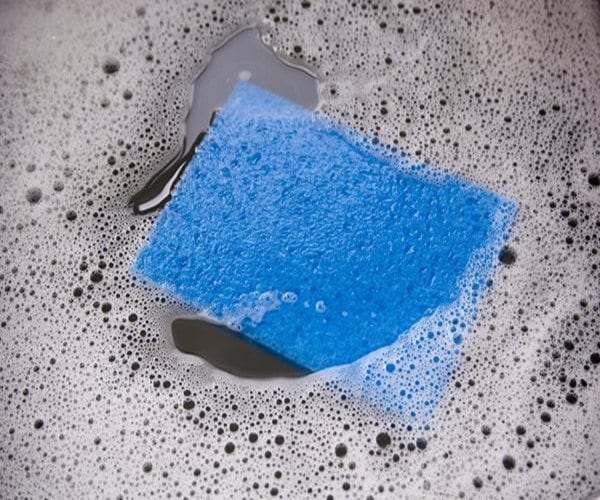
by Dr Alex Jimenez DC, APRN, FNP-BC, CFMP, IFMCP | Natural Health, Wellness
Your home is your castle, and also your haven. But common household items may be turning your sanctuary into a hazard and increasing your risk for colds, viruses, and food poisoning as well as deadly diseases, such as Alzheimer’s and cancer.
Below are five common, but possibly dangerous, items you should consider replacing … now.
Aluminum pots and pans. Aluminum pots and pans may increase your risk for neurological diseases because small amounts of aluminum leach into foods, especially those containing acids. Experts have linked aluminum to Alzheimer’s disease as well as Parkinson’s disease, kidney and liver damage, weakened bones, and multiple sclerosis.
“Aluminum is cumulative, and even small doses over time become highly toxic,” board-certified neurosurgeon Dr. Russell Blaylock tells Newsmax Health. “It’s a powerful neurotoxin. When aluminum combines with certain acids, such as those in orange juice, aluminum absorption is increased 11-fold,” he says. “If you’re cooking with fluoridated water, the aluminum and fluoride bind, so you’re producing aluminum fluoride, an extremely toxic compound.”
The worst scenario for a health disaster involving cookware is boiling water for tea in an aluminum kettle or pan, says Blaylock. “Black tea is already high in aluminum and fluoride, and you’d be getting very high levels of aluminum fluoride. Replace aluminum pots and pans with stainless, says Blaylock.
Scratched “non-stick” cookware. Manufacturers use the chemical PFOA (perfluororctanoic acid) when making Teflon (also known as polytetrafluoroethylene or PTFE), the “no stick” cookware. But the pots and pans that are so easy to clean could be increasing your risk for several conditions, including breast cancer, preeclampsia, thyroid disease, and ulcerative colitis.
Teflon and similar coatings, such as T-Fal and Silverstone, emit PFOAs when heated to a high temperature. The fumes can cause flu-like symptoms in people, nicknamed “Teflon flu.” A study by the Environmental Working Group found that heating a nonstick pan to 680 degrees on an ordinary electric stove released six toxic gasses including two that are known to cause cancer.
Studies have found that empty pans can reach 800 degrees in only five minutes, and some studies show that enough PFOAs are emitted to kill pet birds at temperatures as low as 325 degrees.
At high temperatures, Teflon also releases tetrafluoroethylene, a known carcinogen, and another chemical called monofluoroacetic acid, which can be fatal even in small amounts. When heated to 887 degrees, Teflon also emits perfluoroisobutene, a substance used in chemical warfare. When pans are scratched, the harmful chemicals are released at even lower temperatures.
Older cookware, scratched or not, is more likely to emit toxins, and many manufacturers have agreed to produce non-stick cookware that would not emit PFOAs. To be on the safe side, replace questionable pots and pans with stainless steel. Dr. Blaylock warns of one exception — don’t buy Chinese stainless. “It is usually extremely low-grade and it will degrade,” says Dr. Blaylock.
Kitchen sponges. The Centers for Disease Control (CDC) estimates that food poisoning sickens 1 in 6 Americans every year (48 million). Of those, 128,000 are hospitalized and 3,000 die. Salmonella and E. coli, two of the most common, hide on kitchen surfaces and in sponges, which are usually wet and provide an ideal environment for germs to multiply.
To stay safe, replace sponges on a regular basis. Sanitize wet sponges by microwaving them for two minutes, washing in the dishwasher, or placing them in boiling water laced with a couple of tablespoons of vinegar for three or four minutes.
Fire extinguishers. You probably have at least one fire extinguisher in your home, but how long has it been since you’ve even given it a second look? Fire extinguishers can de-pressurize over time and be worthless in an emergency. Check the label to see how long yours should last — some are expected to work for only about five years.
The National Fire Protection Association recommends non-rechargeable units be replaced every 12 years and rechargeable ones tested and recharged every six years. If your home is humid, your extinguisher may need replacing more often.
Check the pressure gauge on your extinguisher every month to make sure it falls in the green area. If not, replace it immediately. Also check for corrosion, cracked hoses, and broken handles — all indicate your fire extinguisher needs to be replaced.
Plastic food containers. Bisphenol A (BPA) is used to make plastics used in food and beverage containers and is often used in the lining of metal cans. BPAs are proven endocrine disruptors and can increase the risk for breast and prostate cancer, heart disease, and obesity. “BPA actually disturbs the hormone production in our bodies,” Dr. Erika Schwartz, a leading expert on hormones tells Newsmax Health.
Avoid BPA by choosing fresh foods and those in glass containers instead of those in cans. Buy plastic containers with the recycling labels No. 1, No. 2, No. 4, and No. 5 on the bottom. Avoid those with No. 3, No. 7, or PC (polycarbonate). Cloudy or soft containers don’t contain BPA.

by Dr Alex Jimenez DC, APRN, FNP-BC, CFMP, IFMCP | Natural Health, Wellness
When children live through a contentious divorce or separation by their parents, the fallout appears to harm their health for decades, even into adulthood, researchers said Monday.
The study involved 201 healthy adults who agreed to be quarantined, exposed to a virus that causes the common cold, and monitored for five days.
Those whose parents had separated and had not spoken to each other for years were three times as likely to get sick, compared to those whose parents had separated but had stayed in touch as the children grew.
Previous research has shown that adults whose parents separated during childhood have an increased risk for poorer health.
The latest study showed that this higher risk of illness is due, at least in part, to heightened inflammation in response to a viral infection, the report said.
“Early life stressful experiences do something to our physiology and inflammatory processes that increase risk for poorer health and chronic illness,” said Michael Murphy, a psychology postdoctoral research associate at Carnegie Mellon University.
“This work is a step forward in our understanding of how family stress during childhood may influence a child’s susceptibility to disease 20-40 years later.”
The study also showed that the adult children of parents who had separated but stayed in touch were no more likely to get sick than the adult children of intact families.
“Our results target the immune system as an important carrier of the long-term negative impact of early family conflict,” said Sheldon Cohen, a co-author and professor of psychology.
“They also suggest that all divorces are not equal, with continued communication between parents buffering deleterious effects of separation on the health trajectories of the children.”
The findings were published in the Proceedings of the National Academy of Sciences, a peer-reviewed US journal.
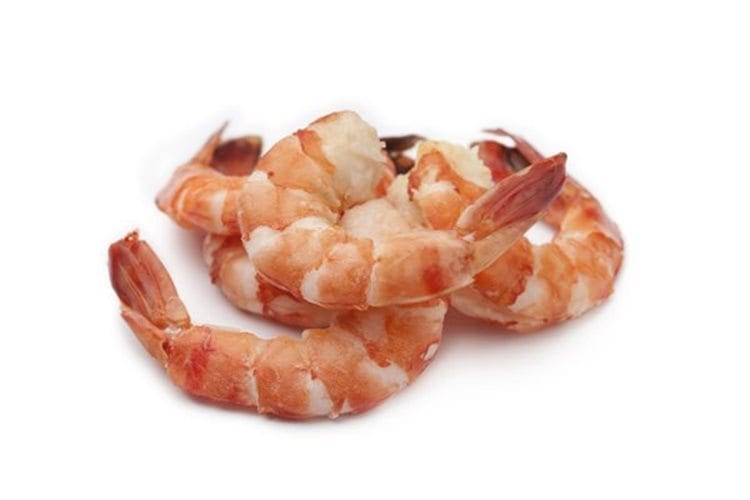
by Dr Alex Jimenez DC, APRN, FNP-BC, CFMP, IFMCP | Natural Health, Wellness
Millions of Americans have had to swear off shellfish, eggs, peanuts or soy to avoid allergic reactions that can range from stomach cramps to life-threatening swelling of the airways, new research shows.
Approximately 4 percent of Americans have a food allergy, with women and Asians the most affected, the study found.
“Recent reports suggest that food allergies are on the rise, with more food allergy-related hospitalizations in the U.S. over the last decade,” said lead researcher Dr. Li Zhou. She’s with the division of general medicine and primary care at Brigham and Women’s Hospital in Boston.
Food allergies cost the United States an estimated $25 billion annually, Zhou said.
For the study, Zhou and her colleagues reviewed nearly 3 million medical records identifying more than 97,000 patients who suffered from one or more food allergies or an intolerance to a food.
The most common allergy was to shellfish, such as shrimp and lobster, Zhou said.
“In addition, 1 in 6 patients with a food allergy or intolerance had a documented anaphylaxis [life-threatening swelling of the airways],” she noted.
Other common food allergies included fruits or vegetables, dairy and peanuts, the researchers found.
Food allergies can lead to reactions such as hives, anaphylaxis, shortness of breath, wheezing, itching, swelling or allergic-like reactions called intolerances, Zhou said.
Her team found that nearly 13,000 patients were allergic or had an intolerance to peanuts, including more than 7,000 who had experienced hives, anaphylaxis or other reactions.
But, only 1 in 5 patients with a peanut allergy received follow-up allergy testing, Zhou said.
Given the number of people in the United States with food allergies, the researchers think that more allergists are needed.
“The spectrum of severity observed with food allergy highlights the critical need for more allergy evaluations,” Zhou said.
The report was published May 31 in the Journal of Allergy and Clinical Immunology.
In addition to shellfish, allergies to peanuts, tree nuts, eggs and milk are common, said Dr. Alisa Muniz Crim, a gastroenterologist at Nicklaus Children’s Hospital in Miami.
Patients who have an anaphylactic reaction to a food must exclude that food from their diet, said Crim, who wasn’t involved with the study.
“Many of these patients need to carry an EpiPen, which contains the drug epinephrine that acts quickly to open the airway, letting the patient breathe,” she said.
Among children, common reactions are stomach cramps, vomiting, skin rashes and diarrhea, Crim said.
Some food allergies can be treated by gradually exposing patients to increasing amounts of the allergy-causing food until they build a tolerance to it, Crim said. But for people with severe allergies, avoidance is the best treatment, along with anti-allergy medications, she said.
Crim thinks that schools should have kits that include an EpiPen to treat kids who have an allergic reaction.
Dr. James Baker Jr., CEO and chief medical officer of Food Allergy Research and Education, said it’s concerning that 1 in 6 patients with a food allergy in this study had experienced anaphylaxis.
“Avoiding or preventing these severe reactions is crucial to ensure the safety of individuals with food allergies,” he said.
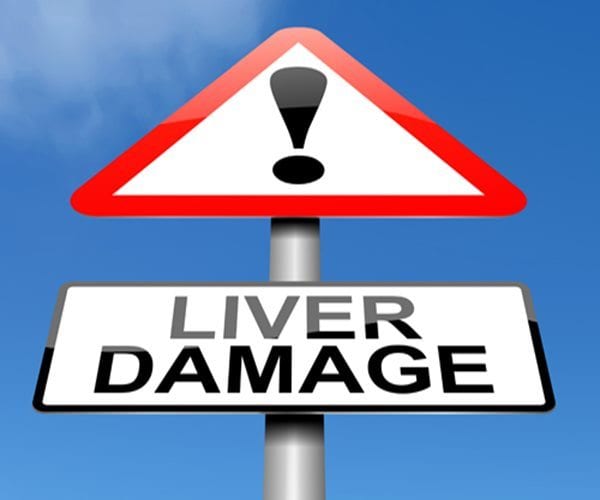
by Dr Alex Jimenez DC, APRN, FNP-BC, CFMP, IFMCP | Natural Health, Wellness
Zinc may fight liver disease in a way scientists never expected, say Australian researchers who found that zinc naturally inhibits the inflammatory effects of interferon lambda 3 (IFN-λ3), a protein strongly associated with tissue damage in chronic liver disease. IFN-λ3 also decreases antiviral activity and increases viral replication both in vitro and in vivo.
The study’s lead author Dr. Scott Read said the study provides the first evidence that zinc can act as a potent and specific inhibitor of IFN-λ3 in viral infections such as hepatitis C and influenza.
“We have demonstrated that zinc inhibits numerous facets of the liver’s immune response to viruses that may be mediated by IFN-λ3,” Read said.
“Zinc also blocks the inflammatory activity of IFN-λ3, which has been strongly linked to accelerated progression to liver cirrhosis in viral and non-viral liver disease,” Read says.
In an article published in Nature Communications, Read concluded that the study showed zinc’s potential as a simple and effective treatment against acute and chronic liver inflammation.
Other natural substances have been found to be effective against liver disease. A 2016 study conducted at the University of Southampton found that two cups of coffee a day reduced the risk of liver cirrhosis — scarring due to alcohol and viruses like hepatitis C — by 44 percent. The study, which was published in the science journal Alimentary Pharmacology and Therapeutics, also found that coffee cut the risk of dying from cirrhosis by almost half.
Drugs have also been found to be effective against liver disease. The common anti-inflammatory drug called Nasalcrom (cromolyn sodium) that’s used to treat allergies and asthma could prevent liver disease and reduce the need for liver transplants, according to Texas researchers who found that the medication prevents cells from releasing an inflammatory compound called histamine.







